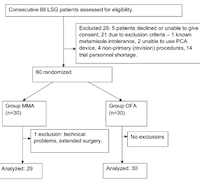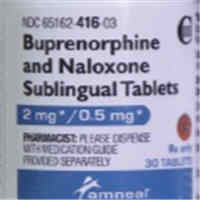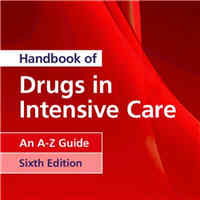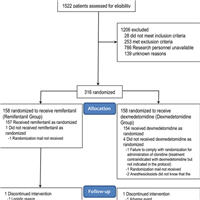Tag: opioids

Scheduled Intravenous Opioids
Maintaining comfort and analgesia is fundamental to providing adequate care in intensive care unit (ICU) patients. Pain assessment and its control remain the highest priorities and concerns among survivors of critical illness... read more

Multimodal vs. Intraoperative Opioid Free Anesthesia for Laparoscopic Sleeve Gastrectomy
Anesthesia for laparoscopic sleeve gastrectomy and perioperative management remains a challenge. Several clinical studies indicate that opioid-free anesthesia (OFA) may be beneficial, but there is no consensus on the most... read more

Dexmedetomidine for EOL Sedation
This study demonstrates a reduction in breakthrough medication requirements, particularly benzodiazepines, for patients sedated with dexmedetomidine at end of life (EOL). The dexmedetomidine cohort required less breakthrough... read more

New Study for Opioid Use Patterns
The purpose of this study is to as certain and describe the trajectories of pain experienced by a diverse group of opioid naive patients who are prescribed an opioid analgesic for acute pain. Using a digital health-based... read more

Use of ECMO in Acutely Poisoned Pediatric Patients in US
Extracorporeal Membrane Oxygenation (ECMO) may improve the hemodynamic and metabolic status of poisoned pediatric patients. Persistent hypotension, acidemia/acidosis, and elevated Pao2 after 24 hours of ECMO were associated... read more

Buprenorphine-Precipitated Opioid Withdrawal in the ED
Buprenorphine-precipitated opioid withdrawal is seen in patients physically dependent on opioids who have recently taken full-agonist opioids and are then administered buprenorphine. Patients with severe withdrawal commonly... read more

The Reemergence of Ketamine for Treatment in Critically Ill Adults
Ketamine has suggested potential benefit in several disease states impacting critically ill patients including pain, alcohol withdrawal syndrome, status epilepticus, and acute agitation. Further supporting evidence is needed... read more

Handbook of Drugs in Intensive Care: An A-Z Guide
Now in its sixth edition, the Handbook of Drugs in Intensive Care is the essential guide to using drugs safely and effectively in the intensive care setting. The book is split into two sections: an A-Z guide to the drugs... read more

Ketamine vs. Nonketamine Regimens for Analgosedation in the ICU
Results suggest ketamine as an adjunct analgosedative has the potential to reduce opioid exposure in postoperative and MV patients in the ICU. More RCTs are required before recommending routine use of ketamine in select populations. A... read more

Long-Term Opioid Prescription Linked to Higher Risk of Hepatitis C
Exposure to long-term prescription opioid therapy was linked to a three times higher risk of HCV seroconversion compared to individuals who were prescription opioid-naïve or acute. Prescription opioid use is associated... read more

Epidemiology, Outcomes, and Trends of Patients with Sepsis and Opioid-Related Hospitalizations
Sepsis is an important cause of morbidity and mortality in patients with opioid-related hospitalizations, and opioid-related hospitalizations contribute disproportionately to sepsis-associated deaths among younger patients.... read more

Consensus Process to Define Guiding Principles for Acute Perioperative Pain Management
The US Health and Human Services Pain Management Best Practices Inter-Agency Task Force initiated a public–private partnership which led to the publication of its report in 2019. The report emphasized the need for individualized,... read more

Conversion From Continuous Infusion Fentanyl to Continuous Infusion Hydromorphone in the Pediatric ICU
A median 14% fentanyl dose reduction was noted when transitioning to hydromorphone. Further exploration is needed to determine if opioid rotations with hydromorphone can reduce opioid/sedative exposure. A total of 36 children... read more

Balanced Opioid-free Anesthesia with Dexmedetomidine vs. Balanced Anesthesia with Remifentanil for Noncardiac Surgery
This trial refuted the hypothesis that balanced opioid-free anesthesia with dexmedetomidine, compared with remifentanil, would result in fewer postoperative opioid-related adverse events. Conversely, it did result in a greater... read more




